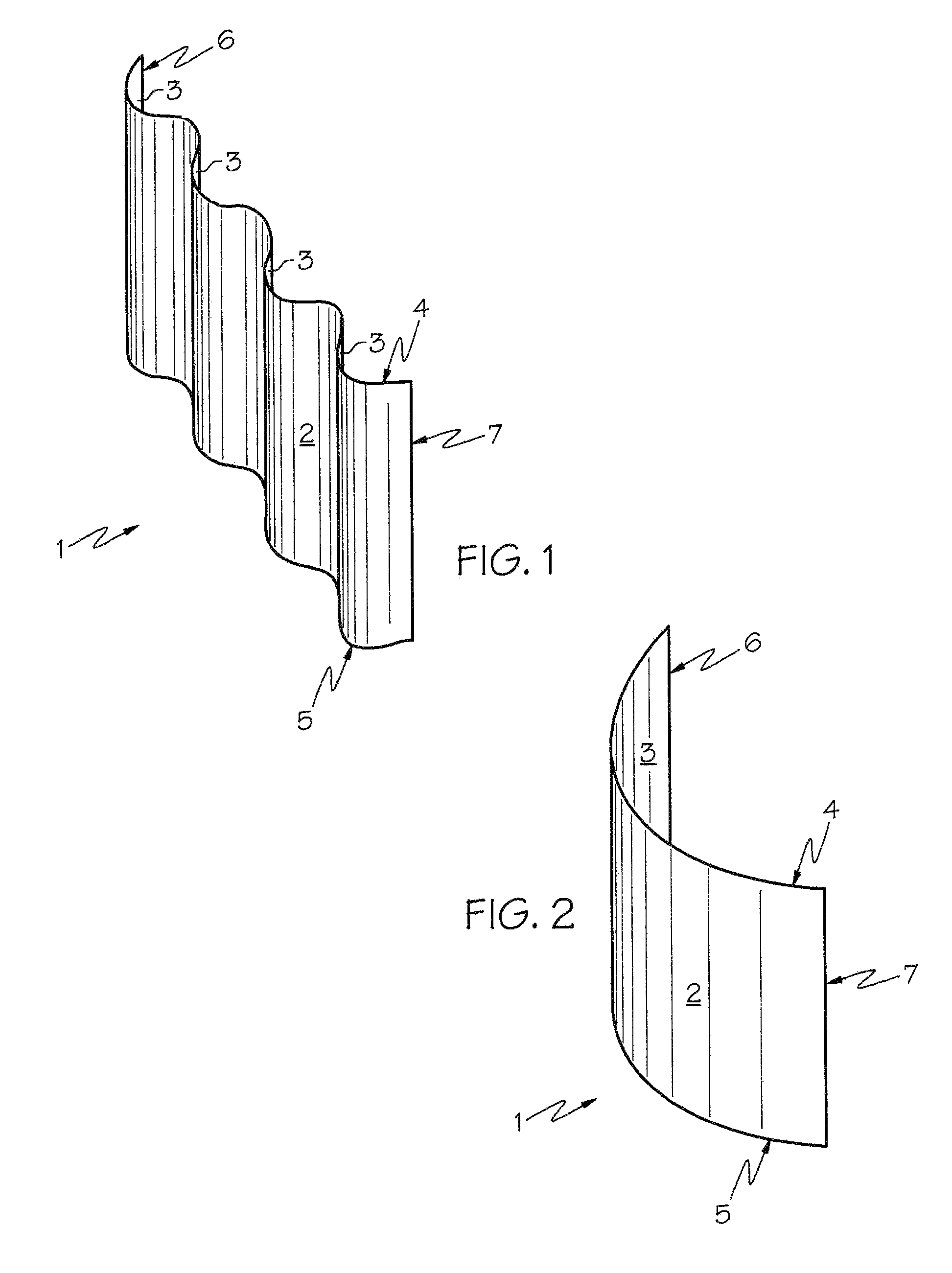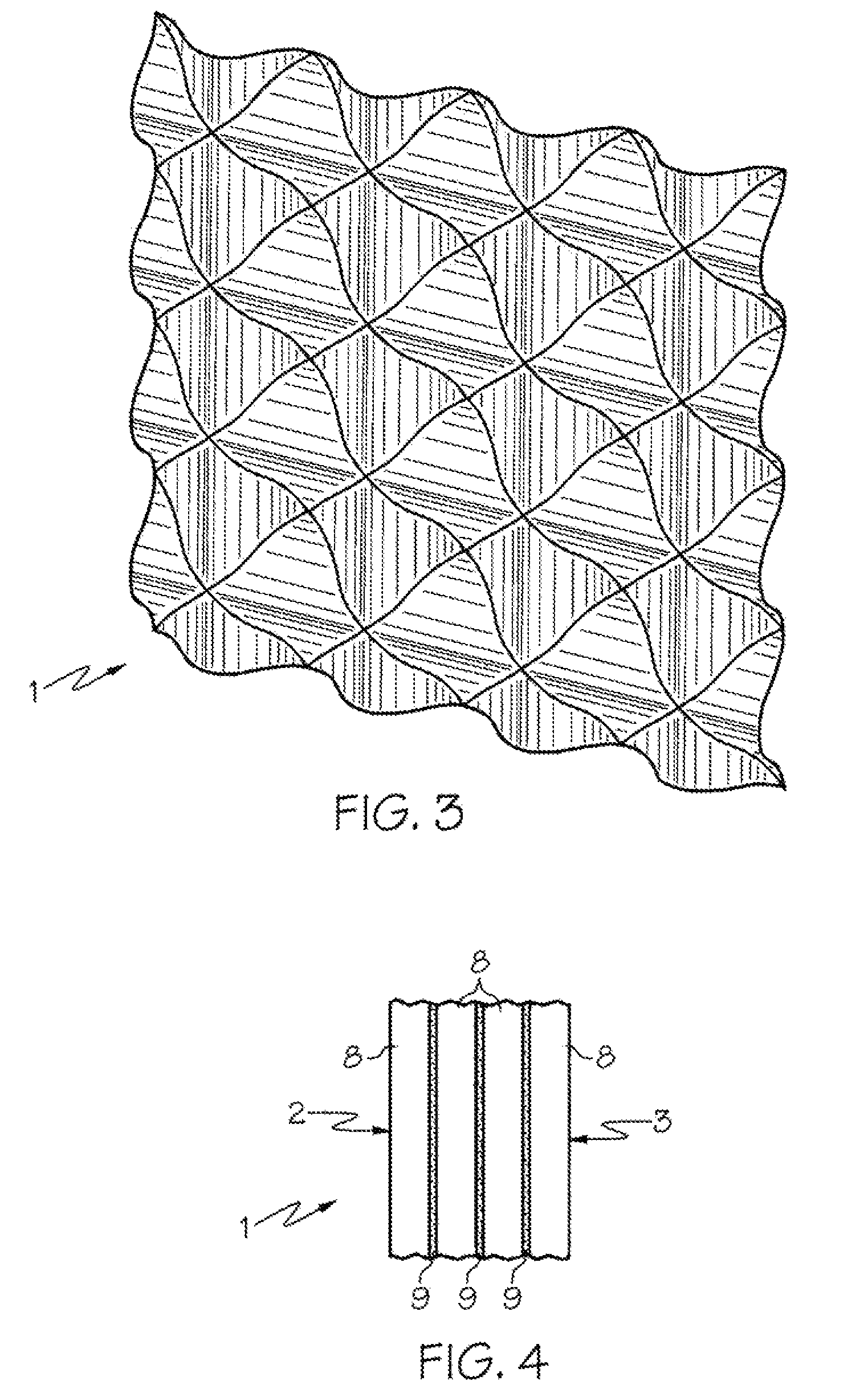Combination acoustic diffuser and absorber and method of production thereof
a technology of acoustic absorbers and diffusers, which is applied in the field of acoustic room treatments, can solve the problems of reducing the diffusion performance of diffusers, reducing the cost of assembly of discrete pieces and subsequent sealing of the resulting assembly, and reducing the efficiency of acoustic absorption. the effect of cost-effectiveness, convenient production and convenient us
- Summary
- Abstract
- Description
- Claims
- Application Information
AI Technical Summary
Benefits of technology
Problems solved by technology
Method used
Image
Examples
Embodiment Construction
[0036]Referring now to the drawings, and particularly to FIG. 1 thereof, an embodiment of a curved acoustically reflective diffusing surface 1 is shown, constructed from wood. The curved diffusing surface 1 has a front face 2, a rear face 3, a top edge 4, a bottom edge 5, a left edge 6 and a right edge 7. The topology of the curved diffusing surface 1 can be corrugated as depicted in FIG. 1, or can be based on a single continuous curve such as the arc of a circle, as depicted in FIG. 2, both of which implementations will diffuse the acoustic energy incident upon the surface in a horizontal hemidisk extending the height of the diffusing surface, or more generally as is known in the art, “one-dimensionally”. The overall height of the curved acoustically reflective diffusing surface 1 in FIGS. 1 and 2 is optimally 32 inches, which height permits the hemidisk of diffusion to occupy the middle vertical third of a 96-inch-high listening environment when the diffusing surface 1 is mounted ...
PUM
 Login to View More
Login to View More Abstract
Description
Claims
Application Information
 Login to View More
Login to View More - R&D
- Intellectual Property
- Life Sciences
- Materials
- Tech Scout
- Unparalleled Data Quality
- Higher Quality Content
- 60% Fewer Hallucinations
Browse by: Latest US Patents, China's latest patents, Technical Efficacy Thesaurus, Application Domain, Technology Topic, Popular Technical Reports.
© 2025 PatSnap. All rights reserved.Legal|Privacy policy|Modern Slavery Act Transparency Statement|Sitemap|About US| Contact US: help@patsnap.com



